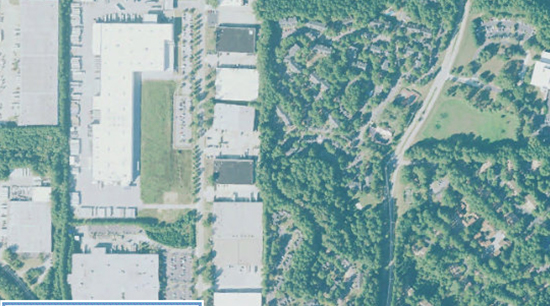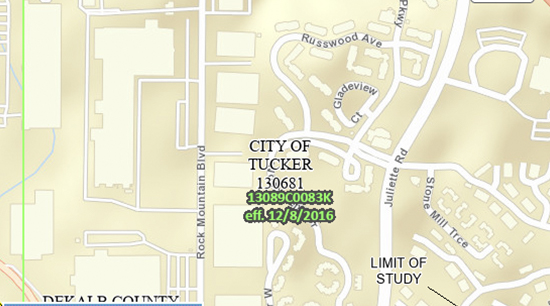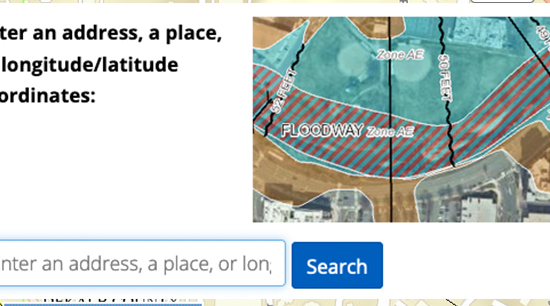Avoid moving Into what you believe your dream home only to have it plagued by rising storm waters and frequent flooding. Knowing how to assess a property’s flood risk will help guide you into a secure home without the looming threat of floods.

alpharettawaterdamageremoval.com assembled the following information and tips about using Federal Emergency Management Agency (FEMA) Flood maps and tools to determine federal flood risk, National flood insurance rates, and what modifications, if any, should be made to the home or land to make it safe.

What is a Flood Map?
FEMA Flood maps help you visualize a community’s risk of flooding. Specifically, flood maps outline a community’s flood zone, floodplain boundaries, and base flood elevations from neighborhood to neighborhood.
Property owners, insurance agents, and lenders can use flood maps to determine flood insurance terms, requirements, and policy costs.
Note: FEMA is required to update community flood maps every five years. If a map is not assessed within the five-year window, the flood risk level is considered “unknown.” FEMA must reassess flood maps regularly to remain aware and ahead of potential flood scenarios and adjust or update insurance rates within the community.
What Can Change a Flood Map?
Nationwide, FEMA flood maps are updated so frequently so a more accurate picture of a community’s flood risk can be maintained. Some events that may have a significant influence on your property’s flood risk:
- Community Development
- New Construction
- Changing Weather Patterns
- Terrain Alterations
Note: Some activities like:
- Levees
- Dams
- Diversions
These may serve to reduce your flood risk over time.
Tip: If you think your property has been incorrectly mapped in a high-risk area, or has been altered by recent construction or development, you may submit a request to FEMA for a Letter of Map Change (LOMC). Find this info and instructions at fema.gov/flood-maps/change-your-flood-zone/loma-lomr-f
Determine Your Property’s Flood Risk
Whether you are purchasing buildings on or moving to a high-risk flood zone or not, you may be required to carry flood insurance because most homeowners and renter’s insurance will not cover flood damage. If you live in an area with low or moderate flood risk, you are 5 times more likely to experience flood than a fire in your home over the next 30 years. For many, a National Flood Insurance Program’s flood insurance policy could cost less than $400 per year. Call your insurance agent today and protect what you’ve built.
To see your work or home property’s flood risk, start by
- visiting msc.fema.gov/portal/search
- Locate the search box near the top of the page
- Type in the address you want to search for and click search
Once your map appears, it can be visualized in its base view (topography) or in street view if more convenient.
Then go to msc.fema.gov/portal/home , search your address again to see the dynamic flood map layer laid over your initial base map.
Note: You will be provided with the following for the exact location you requested on the map search:
- A map number and its effective date – number13089C0083K, effective on12/08/2016
- A file containing the dynamic map
- Revisions
- Amendments
- Revalidations

Tip: Each time you run a new flood map search in the service center, allow one to two minutes for the website to process
Save or print the documents mentioned above generated from FEMA’s service center. They will be used by Property owners, your insurance agents, and financial lenders to determine flood insurance terms, contract requirements, and policy costs.
National Flood Insurance Rates
Is all flood insurance provided through FEMA? It used to be but not anymore. In 2019, federal regulators allowed mortgage lenders to accept private flood insurance policies if they abide by certain restrictions. This opened the door for private insurers. Today there are more than 100 insurance companies offering flood insurance in the U.S. You can still seek coverage from the National Flood Insurance Program. Many homeowners will seek a separate insurance policy to ensure sufficient coverage in the event of a catastrophic weather event with intense flooding.
The cost to insure a property against flood damage is determined by risk-associated factors such as the year the building was constructed, the number of floors, level of flood risk, and the amount of coverage required by the lender.
According to bankrate.com, the average cost of flood insurance in the United States is approximately $700 per year.
Flooding – Flooding can quickly cause costly property damage and requires immediate action to activate your insurance policy(s) and start the water damage removal process.
What Flood Insurance Covers – Flood insurance covers your home and the objects inside.
How To Reduce Your Costs – Lowering your flood risk can lower your insurance costs.
You can start this process by:
Raising your home higher, and leaving ground level spaces for storage or garage space, you’ll reduce the risk of flood damage and reduce insurance premiums, according to FEMA. Building on a higher part of the property rather than a low-lying area may be enough to make a significant reduction in rates.
Building the home or raising it on stilts (to elevate the home above the flood line)
Elevate the home’s utilities above the home’s base flood elevation. Raising the air-conditioning unit, water heater and furnace above the base flood elevation will reduce the risk of expensive damage, which will lead to lower insurance premiums.
Provide openings in the foundation walls for the floodwater to rush through. If the flood waters strike the base of your house hard enough, they could severely undermine the home’s living areas. If there’s an easy way for the water to flow through, reducing the amount of water damage while lowering your insurance premiums.
Flood Maps and Flood Insurance
In this article, you discovered what a flood map is, how flood maps can be changed, and how they can be used to determine your federal flood insurance premium rates.
By changing a few subtle features in and around your home and property, you can drive your flood insurance premiums down. In more dramatic cases, the differences in the land elevation may be enough to lower your property flood risk.
Not taking action to improve the flood risks of your home and property can result in your paying elevated insurance rates and expensive out-of-pocket expenses when disaster strikes.
Sources:
floodsmart.gov/flood-insurance
dfs.ny.gov/consumers/help_for_homeowners/flood_insurance
(678) 505-0266